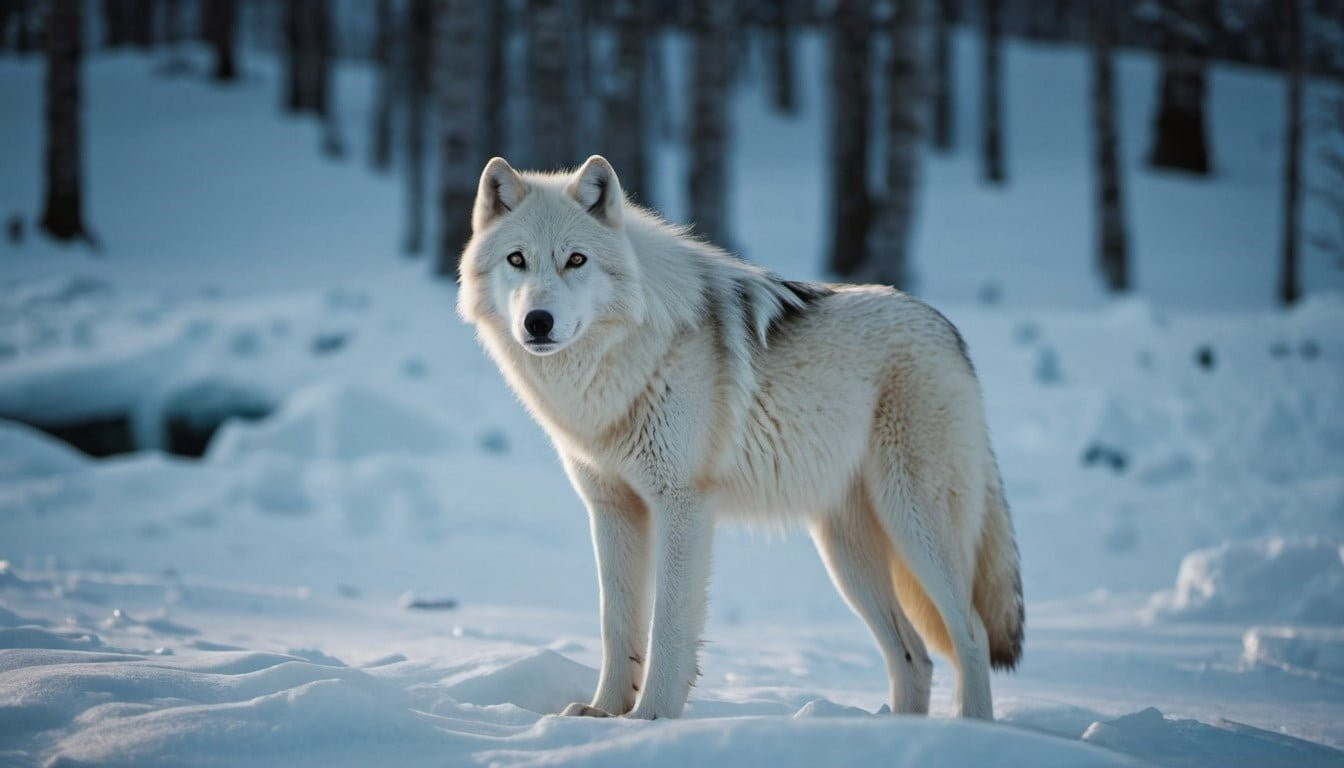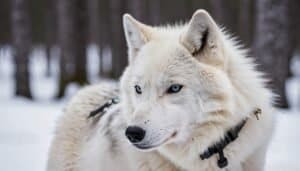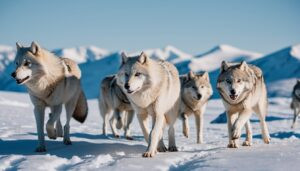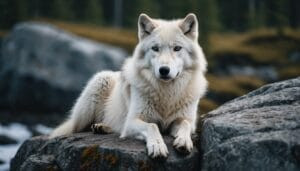Introduction
The conservation of Arctic wolves is a topic of global concern, with various international efforts and policies aimed at protecting this iconic species
This article explores the contributions of major conservation groups, the roles of different countries, the involvement of indigenous communities, and the success stories in Arctic wolf conservation
Additionally, it delves into the global threats faced by Arctic wolves, the effectiveness of international policies, and the impact of global environmental agreements
International Efforts and Policies
The conservation of Arctic wolves involves a concerted effort by various international organizations, countries, and collaborative projects. These efforts are crucial in addressing the challenges posed by environmental changes and human activities
Major Conservation Groups
Several international organizations play a pivotal role in Arctic wolf conservation. The World Wildlife Fund (WWF) focuses on protecting the Arctic ecosystem, which includes the habitat of Arctic wolves
WWF’s initiatives include research, advocacy, and on-the-ground conservation projects. Similarly, the International Union for Conservation of Nature (IUCN) provides valuable data through its Red List of Threatened Species, highlighting the conservation status of Arctic wolves and promoting necessary actions to safeguard their future
Leading Countries in Conservation Efforts
Countries like Canada and Russia are at the forefront of Arctic wolf conservation. Canada, with its vast Arctic territories, implements stringent wildlife protection laws and conducts extensive research on Arctic wolf populations
Russia, home to significant portions of the Arctic, also engages in robust conservation activities, including habitat preservation and monitoring of wolf populations. Both countries collaborate with international bodies to enhance conservation strategies and share best practices
Collaborative International Projects
International collaboration is key to effective Arctic wolf conservation. Projects such as the Arctic Council’s Conservation of Arctic Flora and Fauna (CAFF) workgroup bring together Arctic nations to address shared environmental concerns
CAFF’s initiatives include monitoring Arctic biodiversity, developing conservation strategies, and fostering cooperation among member countries. These collaborative efforts ensure a unified approach to protecting Arctic wolves and their habitat from the impacts of climate change and other threats
Global Threats and Challenges
Arctic wolves face numerous threats that require a coordinated international response. The most pressing challenges include climate change, human activities, and the difficulties in implementing conservation policies effectively
Climate Change
Climate change poses a significant threat to the Arctic wolf’s habitat. As global temperatures rise, the Arctic experiences dramatic changes, including the melting of sea ice and permafrost
This leads to habitat loss and shifts in prey availability, forcing Arctic wolves to adapt to rapidly changing conditions. Warmer temperatures also disrupt the delicate balance of the Arctic ecosystem, affecting not only the wolves but also the flora and fauna they depend on
According to the National Snow and Ice Data Center, the Arctic has warmed nearly twice as fast as the global average, a phenomenon known as Arctic amplification. This accelerated warming has profound impacts on the distribution and abundance of species within the Arctic region, making the conservation of Arctic wolves increasingly challenging
Human Activities
Human activities, such as industrial development and resource extraction, further threaten Arctic wolves. Oil and gas exploration, mining, and infrastructure development can lead to habitat destruction and fragmentation
These activities disrupt the natural landscapes that Arctic wolves rely on for hunting and denning. Additionally, increased human presence in the Arctic can lead to direct conflicts, such as hunting and trapping of wolves
The Arctic is rich in natural resources, attracting various industries. However, the exploitation of these resources often comes at the expense of the environment. For example, the construction of roads and pipelines not only fragments habitats but also increases human access to previously remote areas, raising the risk of human-wildlife conflicts
Implementation Challenges
Despite the existence of international conservation policies, implementing them effectively remains a significant challenge
Differences in national regulations, economic priorities, and political will can hinder coordinated efforts. Furthermore, the remote and harsh conditions of the Arctic make monitoring and enforcement of conservation measures difficult
The Arctic Council, through its Conservation of Arctic Flora and Fauna (CAFF) workgroup, strives to harmonize conservation efforts across Arctic nations. However, varying levels of commitment and resource allocation among member countries can lead to inconsistencies in policy implementation
Ensuring compliance with international agreements and promoting collaboration among countries are essential for the successful conservation of Arctic wolves
Contributions and Roles of Indigenous Communities
Indigenous communities play a crucial role in the conservation of Arctic wolves. Their traditional knowledge, deep connection to the land, and collaborative efforts with conservation organizations contribute significantly to the preservation of this species
Traditional Knowledge
Indigenous communities possess extensive knowledge about the Arctic environment and its wildlife, including Arctic wolves. This knowledge, accumulated over generations, encompasses understanding wolf behavior, migration patterns, and ecological relationships. Indigenous practices often emphasize sustainable use of resources, ensuring that wildlife populations, including Arctic wolves, are not overexploited
Traditional ecological knowledge (TEK) has been increasingly recognized as a valuable resource for conservation efforts. TEK provides insights that scientific research may overlook, offering a holistic perspective on ecosystem management. For example, indigenous observations about changes in wolf behavior and prey availability can inform adaptive management strategies that align with environmental fluctuations
Collaborative Efforts
Indigenous communities often collaborate with government agencies, non-governmental organizations, and researchers to enhance conservation efforts. These partnerships leverage indigenous knowledge and modern conservation techniques to create effective strategies for protecting Arctic wolves
In Canada, initiatives such as the Indigenous Guardians Program empower indigenous peoples to manage and monitor their traditional lands, including areas critical to Arctic wolf conservation
Guardians are trained in wildlife monitoring, habitat restoration, and conservation enforcement, combining traditional practices with scientific methods. Such programs not only support Arctic wolf conservation but also promote indigenous leadership and stewardship
Collaborative efforts extend to international platforms as well. Indigenous representatives participate in forums like the Arctic Council, contributing their perspectives to global conservation discussions. By integrating indigenous voices into decision-making processes, conservation initiatives become more inclusive and culturally sensitive, leading to more sustainable outcomes
Success Stories and Research
There have been notable success stories in Arctic wolf conservation, along with ongoing research that provides valuable insights into their behavior, ecology, and the challenges they face. These efforts highlight the progress made and the areas where further work is needed
Notable Conservation Programs
Several conservation programs have successfully contributed to the preservation of Arctic wolves
One such example is the establishment of protected areas that ensure safe habitats for these wolves. Canada’s creation of the Nunavut and Yukon protected regions has provided large, undisturbed territories where Arctic wolves can thrive. These protected areas are crucial in maintaining stable wolf populations by minimizing human disturbances and preserving natural prey populations
Another success story is the collaboration between conservation organizations and local communities. Programs like the Arctic Wolf Recovery Project have worked with indigenous groups to monitor wolf populations and implement conservation strategies
These initiatives often involve community-based monitoring, which combines scientific research with local knowledge, leading to more effective conservation outcomes
Current Studies
Ongoing research is essential for understanding the ecological needs and challenges faced by Arctic wolves. Current studies focus on various aspects such as population dynamics, genetic diversity, and the impact of climate change on wolf behavior and prey availability
Researchers from institutions like the University of Alberta and the Wildlife Conservation Society are conducting extensive field studies to gather data on Arctic wolf packs, their hunting strategies, and their interactions with other species
One significant area of research is the study of predator-prey relationships in the Arctic. Understanding how Arctic wolves interact with their primary prey, such as caribou and muskoxen, helps in developing conservation strategies that ensure the balance of the ecosystem
Research findings have shown that healthy wolf populations are vital for controlling prey species numbers and maintaining ecological stability
Future Research Directions
Looking ahead, future research aims to address emerging threats and improve conservation methods. One critical area is the study of genetic diversity within Arctic wolf populations. Ensuring genetic diversity is crucial for the long-term survival of the species, as it enhances their ability to adapt to environmental changes and resist diseases
Another important direction is the investigation of the cumulative impacts of climate change and human activities on Arctic wolves
As the Arctic environment continues to change, understanding how these factors interact will help in predicting future challenges and developing adaptive management strategies. Researchers are also exploring the use of technology, such as satellite tracking and remote sensing, to monitor wolf populations more efficiently and accurately
Collaborative research efforts involving multiple countries and disciplines are essential for addressing the complex conservation needs of Arctic wolves. By sharing data and expertise, researchers can develop comprehensive strategies that consider the interconnectedness of the Arctic ecosystem
Funding and Global Environmental Agreements
Securing adequate funding and enforcing global environmental agreements are pivotal to the success of Arctic wolf conservation. These components provide the financial resources and regulatory frameworks necessary to support and sustain conservation initiatives
Major Funding Sources
Funding for Arctic wolf conservation comes from a variety of sources, including government grants, non-governmental organizations (NGOs), and international bodies
Governments of Arctic nations, such as Canada, Russia, and Norway, allocate funds for wildlife conservation programs, research, and protected area management. For instance, Canada’s Polar Continental Shelf Program provides logistical support for Arctic research, facilitating studies that benefit wolf conservation
NGOs play a critical role by raising awareness and generating funds through donations and campaigns. Organizations like the World Wildlife Fund (WWF) and the Wildlife Conservation Society (WCS) have dedicated programs for Arctic conservation, channeling resources towards habitat protection, species monitoring, and community engagement projects
International funding mechanisms, such as the Global Environment Facility (GEF) and the United Nations Development Programme (UNDP), also contribute to Arctic wolf conservation by supporting projects that address broader environmental challenges impacting the Arctic region
These funds help implement comprehensive conservation strategies that benefit multiple species and ecosystems
Financial Challenges
Despite the availability of funding sources, financial challenges persist in Arctic wolf conservation. The high costs of conducting research and implementing conservation programs in the remote and harsh Arctic environment can strain available resources
Logistics, equipment, and personnel expenses are significantly higher in the Arctic compared to other regions
Additionally, funding is often subject to fluctuations based on economic conditions and political priorities. Conservation programs may face budget cuts or delays, impacting their effectiveness. Long-term financial sustainability is crucial for maintaining ongoing conservation efforts and responding to emerging threats
Collaborative funding models, involving partnerships between governments, NGOs, and the private sector, are increasingly being explored to overcome these challenges. By pooling resources and sharing costs, stakeholders can ensure that conservation programs have the necessary support to achieve their goals
Key Agreements
Global environmental agreements play a crucial role in shaping Arctic wolf conservation policies and practices. Agreements such as the Convention on Biological Diversity (CBD) and the Arctic Council’s agreements provide frameworks for international cooperation and action
The CBD, adopted by most of the world’s governments, aims to promote the conservation of biological diversity, including Arctic wildlife. It encourages countries to develop and implement strategies for protecting endangered species and their habitats
Through national biodiversity strategies and action plans, member countries commit to taking concrete steps to safeguard biodiversity
The Arctic Council, comprising eight Arctic nations, facilitates cooperation on environmental protection and sustainable development in the Arctic. Its agreements and working groups, like the Conservation of Arctic Flora and Fauna (CAFF), focus on preserving Arctic biodiversity, including Arctic wolves
The Council’s initiatives promote shared research, data exchange, and coordinated conservation efforts among member states
Compliance and Enforcement
Effective conservation requires not only the adoption of global agreements but also robust compliance and enforcement mechanisms. Ensuring that countries adhere to their commitments and effectively implement conservation measures is essential for achieving desired outcomes
Compliance challenges include varying levels of commitment and resources among countries, as well as differing national priorities. Monitoring and reporting mechanisms are critical for tracking progress and identifying areas where additional support or intervention is needed
Strengthening international cooperation and providing technical and financial assistance to countries facing implementation challenges can enhance compliance. Capacity-building initiatives, such as training programs and knowledge-sharing platforms, help countries develop the expertise and infrastructure needed for effective conservation
Conclusion
The international community’s view on Arctic wolf conservation is shaped by a combination of major conservation groups, country-specific efforts, and collaborative projects
The roles of indigenous communities are pivotal, as their traditional knowledge and participation enhance conservation outcomes. While global threats such as climate change and human activities pose significant challenges, notable success stories and ongoing research highlight the progress made in protecting Arctic wolves
Ensuring adequate funding and enforcing global environmental agreements are crucial for sustained conservation efforts. By addressing these interconnected elements, the international community can continue to make strides in preserving the Arctic wolf and its fragile habitat for future generations










